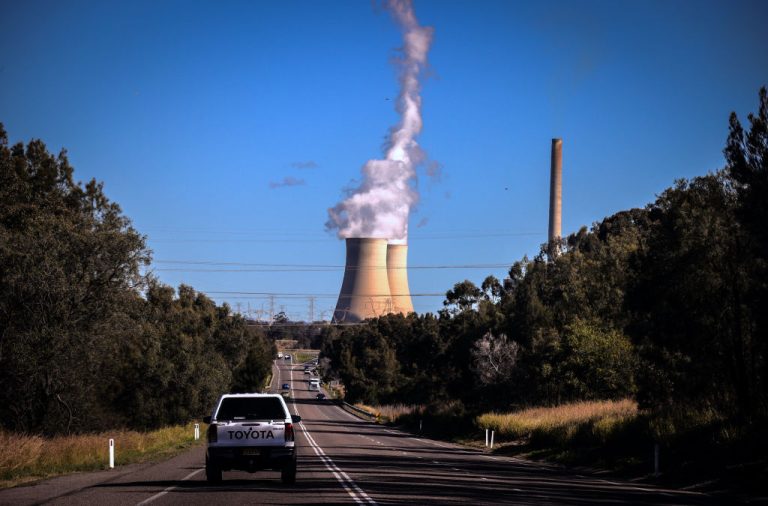The major regulator of Australia’s power grid has taken control of the market after recent pricing interventions caused some generators to take their operations offline, citing profitability issues.
On June 15 the Australian Energy Market Operator (AEMO) announced it would be suspending the spot market for electricity “because it has become impossible to continue operating the spot market while ensuring a secure and reliable supply of electricity for consumers.”
ENERGY CRISIS
- Australian Food Processor Says Natural Gas Prices Will Force It to Close
- Ireland Runs Oil and Electricity Shortage Wargame With Lockdowns, Fuel Control
- Diesel Now $10 a Gallon in Canada
As a result, the Australian energy market will—at least temporarily—run under the provisions of a command economy.
The only states not affected are Western Australia and Northern Territory.
The Press Release states, “The market operator will apply a pre-determined suspension pricing schedule for each NEM [National Electricity Market] region. A compensation regime applies for eligible generators who bid into the market during suspension price periods.”
Success
You are now signed up for our newsletter
Success
Check your email to complete sign up
The NEM refers to a major power grid, which services 9 million people and is described by the Australian Government as interconnecting “the six eastern and southern states and territories and delivers around 80% of all electricity consumption in Australia.”
Same day reporting by messaging outlet Australian Broadcasting Corporation explained the spot market in layman’s terms: “The spot market is what AEMO uses to match the supply of electricity from power stations with real-time consumption by households and businesses.”
And adds, “AEMO says the spot price tells generators how much electricity the market needs at any moment in time to keep the physical power system in balance.”
On June 13, AEMO announced it had placed a $300/MWh cap on the Queensland market after prices “reached a cumulative high price threshold of $1,359,100 (accumulated over seven days)” the day prior, triggering a provision in the National Energy Rules that allows the Operator to intervene.
Additionally, the release stated that the $300/MWh cap would thereby come into effect in any region exceeding the cumulative high price threshold immediately.
By comparison, the price of electricity in Alberta, Canada posted at 12.138 cents/KWh, or $123.80/MWh, in April, according to Epcor.
In the Release, the Operator was forced to admit the cap had material impact on electrical supply, “As a consequence of the administered price cap in Queensland, AEMO has seen generation bids reduce and has issued Lack of Reserve (LOR) notices in both Queensland and New South Wales, signalling a reduction in pre-determined electricity reserve levels.”
“At this time, there is no impact to consumer supply,” they stated.
In the June 15 announcement, AEMO CEO Daniel Westerman was paraphrased as stating, “The market operator was forced to direct five gigawatts of generation through direct interventions yesterday, and it was no longer possible to reliably operate the spot market or the power system this way.”
According to The Guardian, during a press conference, Westerman elucidated that 5 GW amounted to “roughly 20% of demand.”
9News described the move by AEMO as a “drastic intervention,” and pointed out, “It is the first time the NEM has ever been suspended.”
Blackouts
In a June 14 colloquially-themed explainer by ABC, the outlet focused on “load shedding,” which it described as, “In the electricity industry no two words instil a greater sense of fear or failure as load shedding.”
They cut to the chase, “But its implications are clear and cold enough — it means blackouts.”
The ABC attributed the need for consumers and businesses to endure blackouts to a major spike in demand in Queensland and New South Wales after a case of early onset winter.
Another substantial contributor is that many of the eastern coal-fired power stations are offline due to a shortage of coal.
The coal shortage has resulted in natural gas-fired power stations having to ramp up production, a problem when prices have already also been capped by government regulators, and at a staggering $40/GJ.
In June 7 reporting, ABC explained that the Tallawara power station, for example, “usually runs at around 20 per cent of its full capacity.”
“So far this year it is around 60 per cent, and in the past month around 75 per cent.”
The Guardian reported on June 14 that two of Western Australia’s state-run coal power plants are nonetheless set to be shuttered entirely by 2030.
The State runs a separate power grid and the government was paraphrased as stating the cause as, “The rise of solar power – particularly on rooftops – had led to the two remaining coal plants becoming less viable.”
“The state will join South Australia, the Northern Territory, the Australian Capital Territory and Tasmania to be coal-free in its power generation,” the article stated.
And added, “On Tuesday afternoon, coal, solar and gas were providing roughly equal shares of the market.”
AEMO’s June 15 spot market suspension announcement attributed part of the cause of energy shortages to “Periods of low wind and solar output.”
















